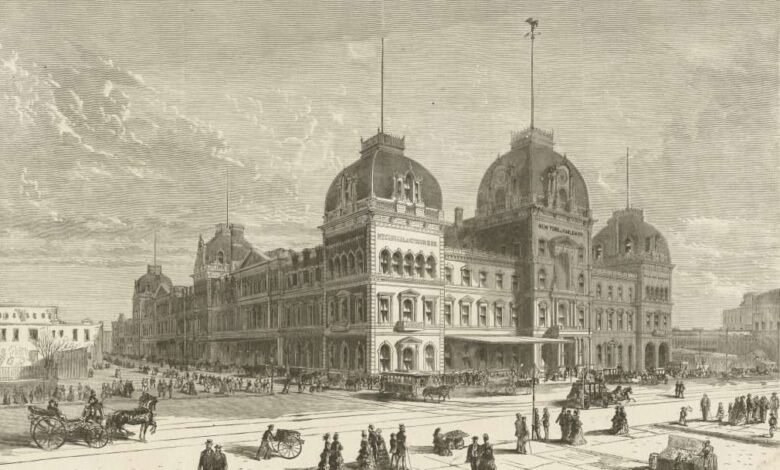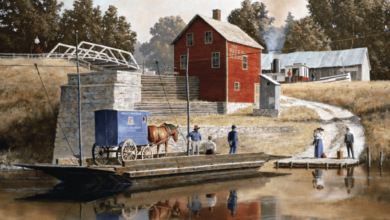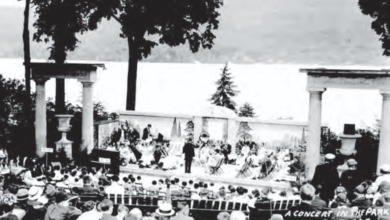1871: The New Grand Central Depot at 42nd Street & Fourth Avenue, Manhattan


 What follows is a July 15, 1871 Scientific American article about the opening of Manhattan’s Grand Central Depot, a predecessor to the current Grand Central Terminal, built on the site of a previous 42nd Street Station. This structure was later expanded and became known as Grand Central Station before its final reincarnation as the current Grand Central Terminal in 1913:
What follows is a July 15, 1871 Scientific American article about the opening of Manhattan’s Grand Central Depot, a predecessor to the current Grand Central Terminal, built on the site of a previous 42nd Street Station. This structure was later expanded and became known as Grand Central Station before its final reincarnation as the current Grand Central Terminal in 1913:
Among all our large commercial buildings, the railroad depots are those of which New Yorkers have least cause to be proud. Discomfort, shabbiness, and dirt, concentrated in ill-ventilated structures, have generally hitherto been all the accommodation to the public that our railroad kings have seen fit to give.
But at last a building has been erected, where space for business, order and discipline in arrangement, ample ingress and egress, and substantial elegance of interior and exterior, are provided. This is the new Union Depot, corner of Forty-Second Street and Fourth Avenue, and it is intended to be the New York terminus of the New York Central and Hudson River, the New York and Harlem, and the New York and New Haven lines, which are all, directly or indirectly, under the control of Commodore [Cornelius] Vanderbilt.
The building is nearly 800 feet in length by 240 in width, and is thus about four acres in floor area. The crown of the arched roof is over 100 feet from the ground; and the iron and glass of which the roof is built, and which is now the universal system of roof building for railroad purposes, insure to the depot plenty of light and an airy and pleasant appearance.
Offices for the transaction of the business of the three roads, well built and decorated, are exterior to the depot itself, and face Forty-Second and the adjacent streets; and waiting rooms, with restaurant adjoining, and toilet accommodation are also provided.
Telegraphic communication is made from the depot master’s office to all the switches, and the centralization of all the switch arrangements will be found to prevent the numerous slight accidents which often occur in and about a railroad depot, accidents of which the public hears nothing, but which add greatly to the expenses of a railroad.
To these well designed and costly arrangements, it will be necessary to add a well disciplined, courteous, and business like staff of clerks, porters, and attendants; and the traveling public will appreciate the convenience of the new terminus, and one of our railway presidents will have got rid, as far as he is concerned, of a lasting reproach to New York.
Grand Central Terminal arose from a need to build a central station for the Hudson River Railroad, the New York and Harlem Railroad, and the New York and New Haven Railroad in Midtown Manhattan. The Harlem Railroad originally ran as a steam railroad on street level along Fourth Avenue (now Park Avenue), while the New Haven Railroad ran along the Harlem’s tracks in Manhattan with a trackage agreement.
Vanderbilt had purchased the Hudson River and New York Central Railroads in 1867, and merged them two years later. He then developed a proposal to unite the three separate railroads at a single central station, replacing the separate and adjacent stations that created chaos in baggage transfer. Vanderbilt commissioned John B. Snook to design this new station which was constructed from September 1, 1869, to October 1871 in the Second Empire style.
Illustration: Grand Central Depot in Manhattan, ca. 18171 (New York Public Library).
Source link




